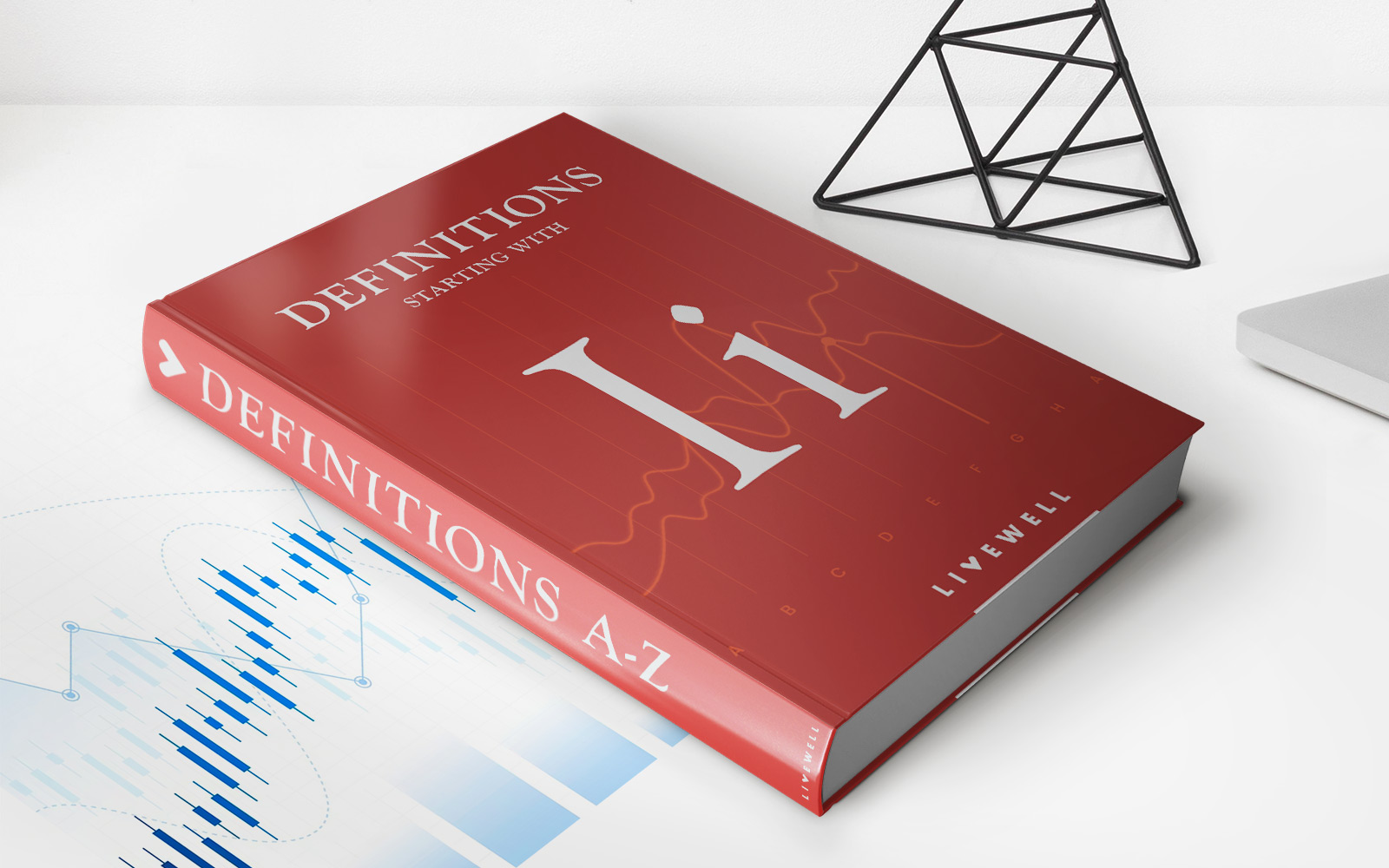Home>Finance>What Is A Contingent Beneficiary In Life Insurance?


Finance
What Is A Contingent Beneficiary In Life Insurance?
Modified: February 21, 2024
Learn about contingent beneficiaries in life insurance and how they can impact your financial plans. Understand the importance of naming a backup beneficiary to ensure your assets are properly distributed.
(Many of the links in this article redirect to a specific reviewed product. Your purchase of these products through affiliate links helps to generate commission for LiveWell, at no extra cost. Learn more)
Table of Contents
- Introduction
- Definition of a Contingent Beneficiary
- Importance of Contingent Beneficiaries in Life Insurance
- Determining and Naming a Contingent Beneficiary
- Rights and Responsibilities of Contingent Beneficiaries
- Contingent Beneficiaries vs Primary Beneficiaries
- Common Scenarios and Considerations for Contingent Beneficiaries
- Updating and Changing Contingent Beneficiaries
- Avoiding Potential Issues and Pitfalls with Contingent Beneficiaries
- Conclusion
Introduction
In the realm of life insurance, the primary purpose is to provide financial security and peace of mind to your loved ones in the event of your passing. One crucial aspect of life insurance is designating beneficiaries, who will receive the policy’s proceeds upon your death. Most policyholders are familiar with primary beneficiaries, individuals specifically named to receive the death benefit. However, there’s another type of beneficiary that is equally important: the contingent beneficiary.
A contingent beneficiary is a secondary recipient of the life insurance death benefit, coming into play if the primary beneficiary is unable or unwilling to receive the proceeds. This designation acts as a safeguard, ensuring that the death benefit does not go unclaimed or end up in the wrong hands. Having a contingent beneficiary is essential for effectively protecting your loved ones and ensuring your life insurance policy is distributed according to your wishes.
In this article, we will explore the concept of contingent beneficiaries in life insurance, discuss their significance, and outline the process of determining and naming them. We will also delve into the rights and responsibilities of contingent beneficiaries, examine the differences between contingent and primary beneficiaries, and provide insights into common scenarios and considerations for contingent beneficiaries.
Understanding the role and importance of contingent beneficiaries, as well as how to properly designate them, is crucial for anyone holding a life insurance policy. By the end of this article, you’ll have a comprehensive understanding of contingent beneficiaries and be equipped to navigate the complexities of life insurance to safeguard the financial future of your loved ones.
Definition of a Contingent Beneficiary
A contingent beneficiary is an individual or entity named in a life insurance policy to receive the death benefit if the primary beneficiary is unable to fulfill their role or predeceases the policyholder. Think of a contingent beneficiary as a backup recipient who steps in if the primary beneficiary cannot receive the proceeds.
Contingent beneficiaries provide an added layer of protection and ensure that the life insurance policy’s death benefit is distributed according to the policyholder’s wishes. They act as a safety net in case unforeseen circumstances arise that prevent the primary beneficiary from receiving the money.
When the policyholder dies, the insurance company will first determine if the primary beneficiary is alive and eligible to receive the death benefit. If the primary beneficiary is unavailable or has passed away, the insurance company will then turn to the contingent beneficiary for the distribution of the proceeds. It is crucial to properly designate contingent beneficiaries to avoid potential complications and ensure the intended individual or entity receives the funds.
Contingent beneficiaries can be anyone the policyholder chooses, such as a spouse, child, sibling, or friend. They can also be organizations, charities, or trusts. The contingent beneficiary designation allows the policyholder to have control over who will receive the death benefit if the primary beneficiary cannot fulfill their role.
It’s important to note that contingent beneficiaries have no rights or access to the life insurance policy or its proceeds during the policyholder’s lifetime. Their role only comes into effect upon the death of the policyholder when the primary beneficiary is unable to receive the benefit. Until then, the policyholder maintains full control over the policy and can make changes to the contingent beneficiary designation if needed.
Now that we understand what contingent beneficiaries are and their role in a life insurance policy, let’s explore why they are essential and the benefits they provide in ensuring the proper distribution of the death benefit.
Importance of Contingent Beneficiaries in Life Insurance
Contingent beneficiaries play a crucial role in life insurance, providing a safety net and ensuring the smooth distribution of the death benefit. Here are some key reasons why contingent beneficiaries are important:
- Ensuring the intended recipients receive the death benefit: Life insurance policies are designed to provide financial support to specific individuals or entities upon the policyholder’s death. By naming contingent beneficiaries, policyholders can ensure that their chosen recipients receive the death benefit if the primary beneficiary is unable to fulfill their role. This allows the policyholder to have control and peace of mind that their loved ones or designated organizations will be taken care of.
- Protecting against unforeseen circumstances: Life is unpredictable, and unforeseen events can occur that might prevent the primary beneficiary from receiving the policy’s death benefit. This could include the untimely death of the primary beneficiary or their refusal to accept the benefit. By designating contingent beneficiaries, policyholders can protect against such circumstances, ensuring that the funds are still provided to their intended recipients.
- Minimizing potential disputes: Designating contingent beneficiaries can help minimize potential disputes and conflicts among family members or other interested parties. In the absence of a contingent beneficiary, there may be ambiguity about who should receive the death benefit if the primary beneficiary is unable to do so. This can lead to disagreements, legal battles, and delays in distributing the funds. Having a clearly named contingent beneficiary helps avoid such complications and ensures a smooth transfer of the death benefit.
- Flexibility and adaptability: Life circumstances change, and the policyholder’s relationships and priorities may evolve over time. Designating contingent beneficiaries provides flexibility to account for these changes. It allows the policyholder to adjust their beneficiaries as needed, ensuring that the most current and relevant individuals or entities are named to receive the death benefit.
- Preserving assets for future generations: Contingent beneficiaries can be an effective way to pass on wealth to future generations. By designating younger individuals, such as children or grandchildren, as contingent beneficiaries, the policyholder can ensure that the death benefit is used for the benefit of their descendants. This can help secure the financial future of the family and leave a lasting legacy.
Overall, contingent beneficiaries provide an essential layer of protection and ensure that the policyholder’s intentions are carried out. Their role is vital in guaranteeing that the death benefit reaches the intended individuals or entities in a timely and secure manner, avoiding disputes and providing financial security when it is needed the most.
Determining and Naming a Contingent Beneficiary
Determining and naming a contingent beneficiary in your life insurance policy is a crucial step in ensuring that your loved ones or chosen entities receive the death benefit in the event that the primary beneficiary is unable to fulfill their role. Here are some key considerations and steps to follow:
- Evaluate your primary beneficiary: Before selecting a contingent beneficiary, it’s important to assess your primary beneficiary carefully. Ensure that they are capable and willing to fulfill their role in receiving the death benefit. It’s recommended to have open and honest discussions with your primary beneficiary to confirm their willingness and ability to accept the proceeds.
- Identify potential contingent beneficiaries: Think about individuals or organizations that you would like to name as contingent beneficiaries. Consider close family members, trusted friends, or charitable organizations that hold significance to you. It’s essential to choose individuals who would likely outlive you and be available to receive the benefit.
- Weigh the needs and circumstances of potential beneficiaries: Consider the financial needs and circumstances of your potential contingent beneficiaries. Assess their current financial situation, their relationship with you, and their ability to responsibly manage a potentially large sum of money. It’s crucial to consider how the death benefit would impact their lives and whether it aligns with their long-term financial goals.
- Consult with legal and financial professionals: If you have complex financial or familial situations, it’s advisable to seek guidance from legal and financial professionals who specialize in estate planning. They can provide valuable insights and help you navigate the process of determining and naming contingent beneficiaries based on your specific circumstances.
- Review and update beneficiary designations: Regularly review and update your beneficiary designations to ensure they align with your current wishes. Life changes such as marriage, divorce, the birth of children, or changes in financial circumstances may necessitate revisions to your contingent beneficiary designation. Keep your policy up-to-date by promptly making any necessary changes.
- Name contingent beneficiaries in your policy: Once you have determined your contingent beneficiaries, it’s time to officially name them in your life insurance policy. Work with your insurance company or agent to update your policy’s beneficiary designation form. Provide the necessary information, such as the full legal name, relationship, and contact details of each contingent beneficiary.
Remember, it’s crucial to communicate your decisions and intentions with both your primary and contingent beneficiaries. Discussing your choices openly can help avoid any potential misunderstandings or surprises in the future. Keep your loved ones informed about the existence and importance of contingent beneficiaries.
By following these steps and putting careful thought into determining and naming contingent beneficiaries, you can ensure that your life insurance proceeds are distributed according to your wishes, protecting the financial future of your loved ones or designated entities.
Rights and Responsibilities of Contingent Beneficiaries
Contingent beneficiaries in a life insurance policy have specific rights and responsibilities once they become entitled to receive the death benefit. Understanding these rights and responsibilities is vital for both the contingent beneficiaries and the policyholder:
Rights of Contingent Beneficiaries:
- Right to the death benefit: As contingent beneficiaries, they have the right to receive the death benefit if the primary beneficiary is unable to fulfill their role. They are entitled to the designated portion of the policy proceeds upon the death of the policyholder.
- Right to contest: Contingent beneficiaries have the right to contest any actions that may prevent or delay the distribution of the death benefit. If there are disputes or issues surrounding the distribution, they have the right to seek legal resolution.
- Right to information: Contingent beneficiaries have the right to obtain information about the life insurance policy, such as the policyholder’s death, the amount of the death benefit, and any other relevant details. They can request this information from the insurance company or the policyholder’s executor or trustee.
Responsibilities of Contingent Beneficiaries:
- Stay informed: Contingent beneficiaries should stay informed about the policyholder’s status and keep the necessary contact information updated. It is their responsibility to notify the insurance company if the primary beneficiary is unable to receive the death benefit.
- Follow legal procedures: Contingent beneficiaries must follow any legal procedures outlined in the policy, such as providing necessary documentation or completing claim forms to ensure prompt and accurate distribution of the death benefit.
- Communicate with the insurance company: Contingent beneficiaries should maintain open communication with the insurance company and promptly respond to any requests for information or documentation. This helps facilitate the claims process and ensures a smooth transfer of the death benefit.
- Manage the death benefit responsibly: Once the death benefit is received, contingent beneficiaries have the responsibility to manage the funds in a responsible manner. This includes using the funds for their intended purpose, such as paying off debts, covering funeral expenses, providing for dependents, or investing for the future.
- Adhere to any restrictions or conditions: In some cases, the policyholder may outline specific restrictions or conditions for the use of the death benefit. Contingent beneficiaries have the responsibility to adhere to these restrictions and fulfill any conditions set forth by the policyholder.
It’s important for contingent beneficiaries to understand and fulfill their rights and responsibilities to ensure a smooth and fair distribution of the death benefit. Communication, transparency, and adherence to legal procedures are key to maintaining a positive and accountable relationship between the contingent beneficiaries and the insurance company.
Contingent Beneficiaries vs Primary Beneficiaries
In life insurance, both contingent beneficiaries and primary beneficiaries play critical roles in determining who receives the death benefit. Here’s a breakdown of the key differences between these two beneficiary types:
Primary Beneficiaries:
- First in line: Primary beneficiaries are the individuals or entities specifically named by the policyholder to receive the death benefit. They are the primary recipients and have the first right to receive the proceeds.
- Immediate access: Primary beneficiaries can access and receive the death benefit immediately upon the policyholder’s death. They typically play an active role in interacting with the insurance company to initiate the claims process.
- Multiple primary beneficiaries: Policyholders can name more than one primary beneficiary. In such cases, the death benefit is usually divided equally among the primary beneficiaries, unless specified otherwise.
- Revocable designations: Primary beneficiaries can be changed or revoked by the policyholder during their lifetime, as long as they have the necessary legal capacity to do so and follow the policy’s terms and conditions.
Contingent Beneficiaries:
- Secondary recipients: Contingent beneficiaries are named as backup beneficiaries, taking the place of primary beneficiaries if they are unable or unwilling to receive the death benefit. They come into effect only if the primary beneficiary is unable to fulfill their role.
- Receive benefit if primary beneficiary is unavailable: Contingent beneficiaries step in to receive the death benefit if the primary beneficiary predeceases the policyholder or is unable to accept the benefit, such as due to refusal or incapacitation.
- Conditional recipients: The contingent beneficiary designation is conditional, meaning they only receive the death benefit if specific circumstances related to the primary beneficiary’s inability to receive the benefit occur.
- No immediate access: Contingent beneficiaries do not have access to the death benefit during the policyholder’s lifetime. Their role comes into effect only upon the policyholder’s death and the primary beneficiary’s unavailability.
It’s important to note that the primary beneficiary designation takes precedence over the contingent beneficiary designation. The insurance company will first verify if the primary beneficiary is available and able to receive the death benefit before turning to the contingent beneficiary.
Both primary and contingent beneficiaries serve critical roles in ensuring the proper distribution of life insurance proceeds. While primary beneficiaries are the immediate recipients, contingent beneficiaries act as backup recipients, providing an additional layer of protection and ensuring the policyholder’s intentions are carried out in various scenarios.
It’s crucial to regularly review and update both primary and contingent beneficiary designations to reflect any changes in personal circumstances, ensuring that the intended recipients are properly designated and aligned with the policyholder’s wishes.
Common Scenarios and Considerations for Contingent Beneficiaries
Contingent beneficiaries in life insurance policies come into play in various scenarios where the primary beneficiary is unable to receive the death benefit. Here are some common scenarios and considerations to keep in mind when designating contingent beneficiaries:
Predecease of the Primary Beneficiary: One of the most common scenarios is when the primary beneficiary predeceases the policyholder. In this case, the contingent beneficiary is the next in line to receive the death benefit. It’s important to regularly review and update contingent beneficiary designations to ensure they reflect any changes in circumstances or relationships.
Simultaneous Death of the Policyholder and Primary Beneficiary: In the unfortunate event that both the policyholder and the primary beneficiary die simultaneously, the contingent beneficiary or their estate will be entitled to the death benefit. This is an essential consideration when choosing contingent beneficiaries, as they must be individuals or entities capable of managing the policy proceeds in such circumstances.
Refusal or Ineligibility of the Primary Beneficiary: There might be instances where the primary beneficiary is unwilling or unable to accept the death benefit. This could be due to personal reasons, disqualification, or legal issues. In such cases, the contingent beneficiary steps in and assumes the role of the primary beneficiary, receiving the death benefit as designated.
Contingent Beneficiary Hierarchy: If there are multiple contingent beneficiaries named, it’s important to establish a clear hierarchy to determine the order in which they receive the death benefit. Common hierarchies include listing contingent beneficiaries in descending order of preference or creating a hierarchy based on specific relationships, such as spouse, children, siblings, or other relatives.
Special Considerations for Minors or Dependents: If contingent beneficiaries include minors or dependents, special provisions may need to be made to ensure the proper handling of the death benefit. It may be necessary to establish a trust or designate a guardian to manage the funds on behalf of the minors or dependents until they reach a certain age or meet specific criteria.
Communication and Documentation: It’s essential to communicate clearly and openly with both primary and contingent beneficiaries about their roles and responsibilities. In addition, maintaining accurate and updated documentation is crucial to avoid any disputes or confusion regarding the contingent beneficiary designation.
Legal and Financial Advice: Consulting with legal and financial professionals experienced in estate planning can provide valuable guidance when determining contingent beneficiaries. They can help ensure that the chosen beneficiaries align with your wishes and help navigate any complex legal or financial implications.
Keep in mind that the specific circumstances and considerations for contingent beneficiaries may vary based on individual policies and jurisdiction. It’s important to familiarize yourself with the terms and conditions of your life insurance policy and seek professional advice to make informed decisions regarding your contingent beneficiary designations.
By carefully considering these common scenarios and making informed choices, you can ensure that your contingent beneficiaries are well-prepared to receive the death benefit and fulfill their intended purpose of safeguarding the financial security of your loved ones or designated entities.
Updating and Changing Contingent Beneficiaries
Life is ever-changing, and it’s not uncommon for circumstances and relationships to evolve over time. As such, it’s essential to review, update, and make changes to your contingent beneficiary designations in your life insurance policy as needed. Here’s a guide on how to update and change contingent beneficiaries:
Regularly Review Your Beneficiary Designations:
It’s good practice to review your life insurance policy and beneficiary designations periodically, especially when major life events occur. These events can include marriage, divorce, the birth of a child, the death of a beneficiary, or any significant changes in your relationships or financial situation.
Consult with Legal and Financial Professionals:
If you encounter complex scenarios or have concerns about your contingent beneficiary designations, it is advisable to seek guidance from legal and financial professionals specializing in estate planning. They can provide personalized advice based on your specific circumstances and help ensure that your contingent beneficiaries align with your wishes.
Understand the Policy’s Terms and Conditions:
Before making any changes to your contingent beneficiaries, thoroughly review the terms and conditions of your life insurance policy. Familiarize yourself with any restrictions, limitations, or procedures involved in updating beneficiary designations.
Notify the Insurance Company:
To update or change your contingent beneficiary, contact your insurance company or agent. They will provide you with the necessary paperwork and instructions for updating your beneficiary designation. Fill out the required forms accurately and provide the updated information about the new contingent beneficiaries.
Communicate Your Intentions:
It’s crucial to communicate your decisions and intentions to both your existing and new contingent beneficiaries. Let them know about the changes you are making and inform them of their role and responsibilities as contingent beneficiaries.
Keep Copies of Updated Documentation:
Maintain copies of the updated beneficiary designation forms and any related documentation for your records. This will help ensure that there is clear evidence of your updated intentions.
Monitor and Confirm the Changes:
After submitting the updated beneficiary designation forms, follow up with the insurance company to confirm that the changes have been made and recorded correctly. Keep a record of the confirmation for your own peace of mind.
Communicate Changes to Relevant Parties:
Inform your primary beneficiaries, contingent beneficiaries, and any relevant family members or executors about the changes you have made to your contingent beneficiary designations. This transparency will help avoid confusion or disputes in the future.
Remember that updating your contingent beneficiaries is a crucial step in ensuring that your life insurance proceeds are distributed according to your current wishes. By reviewing and making necessary changes, you can provide the best possible safeguard for the financial well-being of your loved ones or designated entities.
Avoiding Potential Issues and Pitfalls with Contingent Beneficiaries
While contingent beneficiaries serve an important role in life insurance policies, certain issues or pitfalls can arise if not properly addressed. Being aware of these potential challenges and taking proactive measures can help avoid complications. Here are some key considerations:
Clear and Updated Designations:
Ensure that your contingent beneficiary designations are clear, specific, and up to date. Clearly identify individuals or entities by their full legal names, relationship to you, and contact information. Regularly review and update these designations to reflect any changes in relationships, circumstances, or your wishes.
Proper Communication:
Communicate openly with your primary and contingent beneficiaries about their roles, rights, and responsibilities. Clearly explain the purpose and importance of the contingent beneficiary designation. Discuss any potential conflicts or concerns that may arise and address them proactively to minimize misunderstandings.
Legal and Professional Advice:
Seek advice from legal and financial professionals who specialize in estate planning to ensure that your contingent beneficiary designations align with your overall estate planning goals. They can provide guidance on complex situations and help navigate any legal implications or tax considerations.
Consider Contingent Beneficiary Hierarchy:
If multiple contingent beneficiaries are named, establish a clear hierarchy specifying the order in which they will receive the death benefit. This hierarchy can be based on prioritizing certain individuals or entities, such as spouse, children, or charitable organizations. Explicitly outline the distribution percentages or amounts for each contingent beneficiary to avoid ambiguity or future disputes.
Review Trusts and Estate Planning:
If you have established a trust or engaged in comprehensive estate planning, ensure that your contingent beneficiary designations align with your trust and overall estate plan. Coordinate with your legal and financial advisors to ensure that your life insurance policy is properly integrated into your larger estate planning strategies.
Consider Potential Contingent Beneficiary Ineligibility:
When naming contingent beneficiaries, consider potential circumstances that could render certain individuals or entities ineligible to receive the death benefit. For example, if you name a charitable organization as your contingent beneficiary, ensure that they will still be operational and eligible to accept the funds at the time of distribution.
Document and Store Records:
Maintain thorough records of your life insurance policy, beneficiary designations, and any related documentation. Store these records in a safe place and inform your loved ones or executor of their location. This will help avoid any potential disputes or challenges in the future.
Regularly Review and Update:
Continuously review and update your contingent beneficiary designations to reflect any changes in personal circumstances, relationships, or financial goals. Regularly revisit and revise your life insurance policy and beneficiary designations to ensure they remain aligned with your current wishes.
Taking these precautions and being proactive in managing your contingent beneficiaries can help mitigate potential issues and ensure that your life insurance proceeds are distributed according to your intentions, providing financial security to the intended recipients when they need it most.
Conclusion
Contingent beneficiaries are an integral part of a comprehensive life insurance plan, serving as backup recipients of the death benefit in case the primary beneficiary is unable to receive it. Designating contingent beneficiaries is essential for ensuring that your loved ones or designated entities are protected and supported financially in the event of your passing.
Throughout this article, we have explored the definition and importance of contingent beneficiaries, their rights and responsibilities, and the differences between contingent and primary beneficiaries. We have also discussed common scenarios, considerations, and pitfalls to be aware of when selecting and updating contingent beneficiaries.
By carefully determining and naming contingent beneficiaries, you can provide an added layer of security, ensuring that your life insurance policy aligns with your wishes and effectively fulfills its purpose. Regularly reviewing and updating your beneficiary designations, communicating openly with your beneficiaries, and seeking professional advice when needed will help avoid potential challenges and ensure that your intentions are carried out.
Remember, life circumstances change, and it’s crucial to periodically revisit your contingent beneficiaries to account for any changes in relationships, legal considerations, or financial goals. By addressing these changes proactively and making necessary updates, you can safeguard the financial well-being of your loved ones and the organizations that matter to you.
It is recommended that you consult with legal and financial professionals who specialize in estate planning to ensure that your contingent beneficiary designations align with your broader estate plan and are in line with relevant laws and regulations.
In conclusion, the role of contingent beneficiaries in life insurance should not be overlooked. By carefully considering and selecting contingent beneficiaries who will assume responsibility if the primary beneficiary cannot, you can strengthen the financial security of your loved ones and ensure the proper distribution of your life insurance proceeds. Take the time to review and update your contingent beneficiary designations regularly, as circumstances change, to provide lasting protection and peace of mind.














